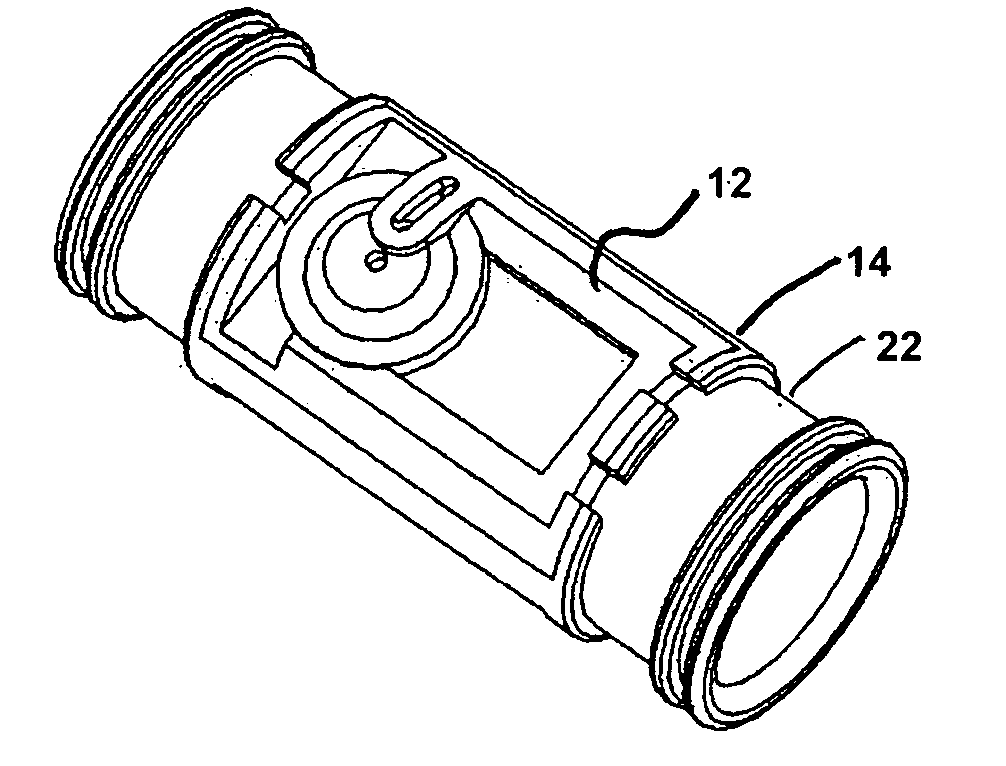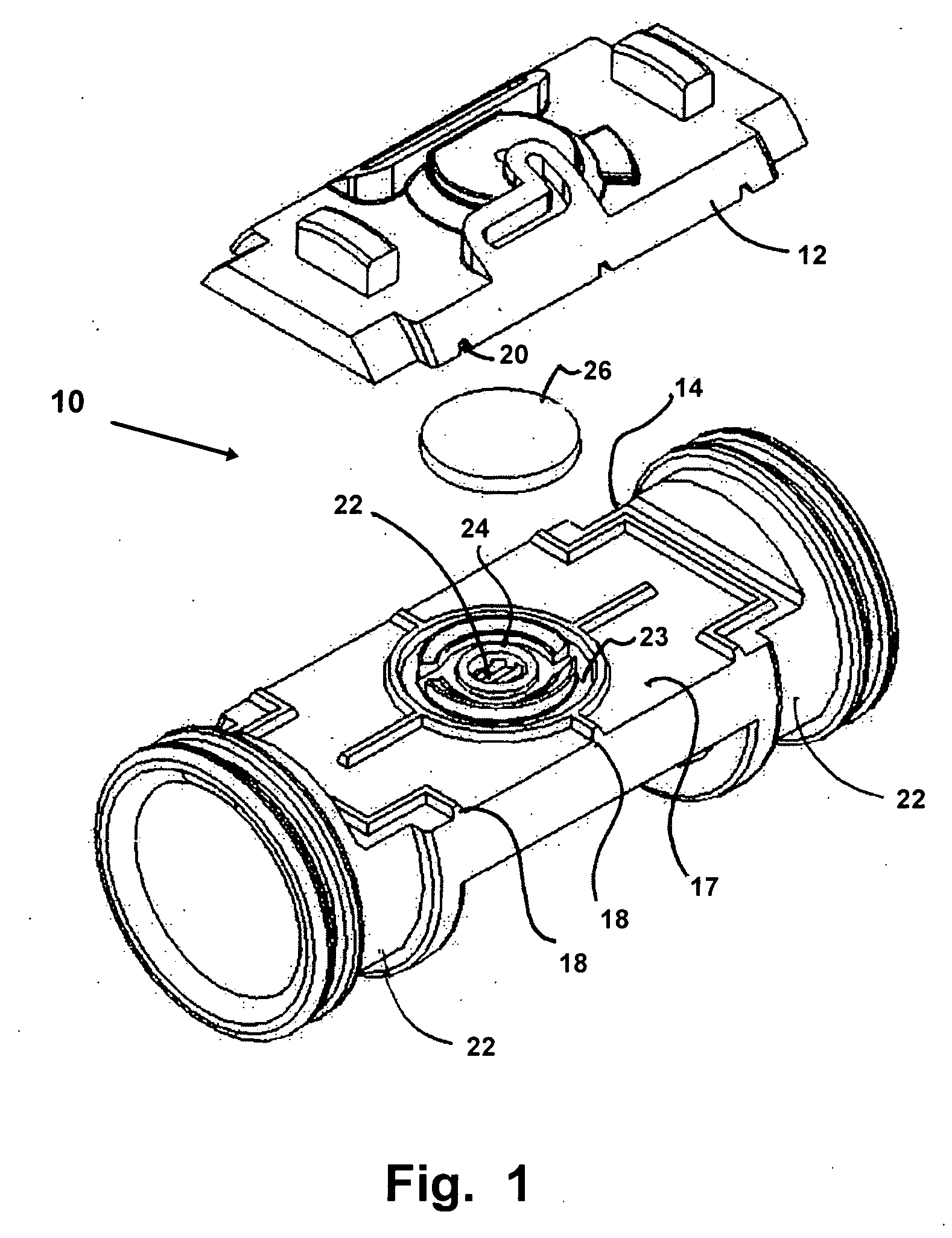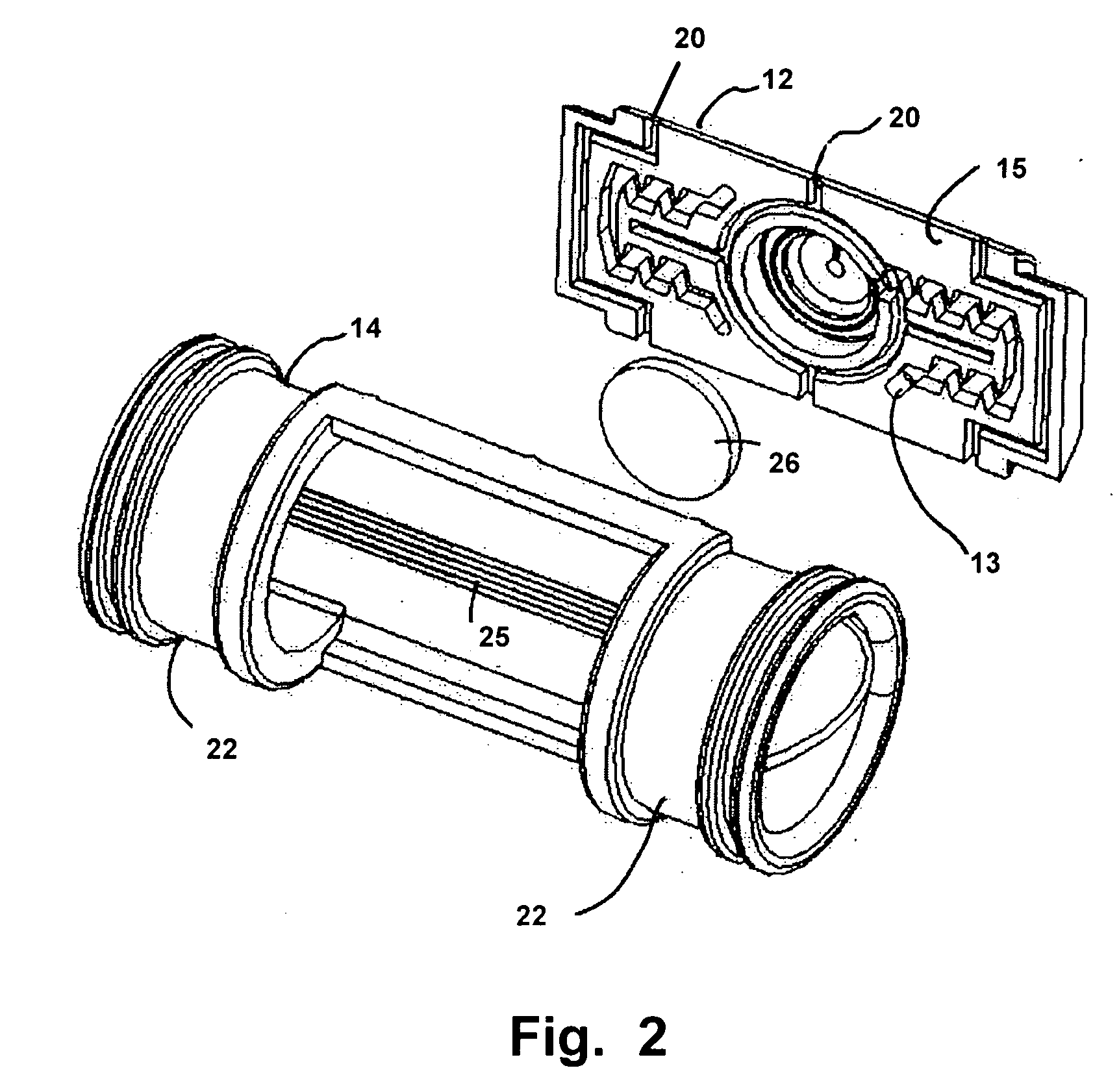Irrigation emitter
a technology of irrigation emitter and emitter body, which is applied in the field of drip irrigation, can solve the problems of affecting the flow rate of the emitter, the failure of the emitter to meet the failure of the assembled emitter and the tubing to reach the specified flow rate, etc., and achieves the effect of high customization and easy adaptation to different flow rates
- Summary
- Abstract
- Description
- Claims
- Application Information
AI Technical Summary
Benefits of technology
Problems solved by technology
Method used
Image
Examples
Embodiment Construction
[0039] Referring now to the drawings, FIGS. 1-13 depict the various embodiments and engagements of the disclosed apparatus and device producing an assembled emitter device 10 that can be customized for flow characteristics, yet eliminate the problems inherent where many manufacturers are involved in making the raw materials and various components intended for a final tubing and emitter assembly.
[0040] The emitter device 10 features a dripper cap 12 available in a plurality of flow configurations, which is adapted for engagement to a properly configured dripper body 14. The dripper cap 12 can be manufactured in a number of configurations as a means to adjust fluid flow rates by changing dimensional characteristics of a labyrinth 13, including one or a combination of characteristics from a group of dimensional characteristics including total aggregate length of said labyrinth 13, diameter of said labyrinth 13, and number and length of individual segments ending at turns in the labyri...
PUM
 Login to View More
Login to View More Abstract
Description
Claims
Application Information
 Login to View More
Login to View More - R&D
- Intellectual Property
- Life Sciences
- Materials
- Tech Scout
- Unparalleled Data Quality
- Higher Quality Content
- 60% Fewer Hallucinations
Browse by: Latest US Patents, China's latest patents, Technical Efficacy Thesaurus, Application Domain, Technology Topic, Popular Technical Reports.
© 2025 PatSnap. All rights reserved.Legal|Privacy policy|Modern Slavery Act Transparency Statement|Sitemap|About US| Contact US: help@patsnap.com



